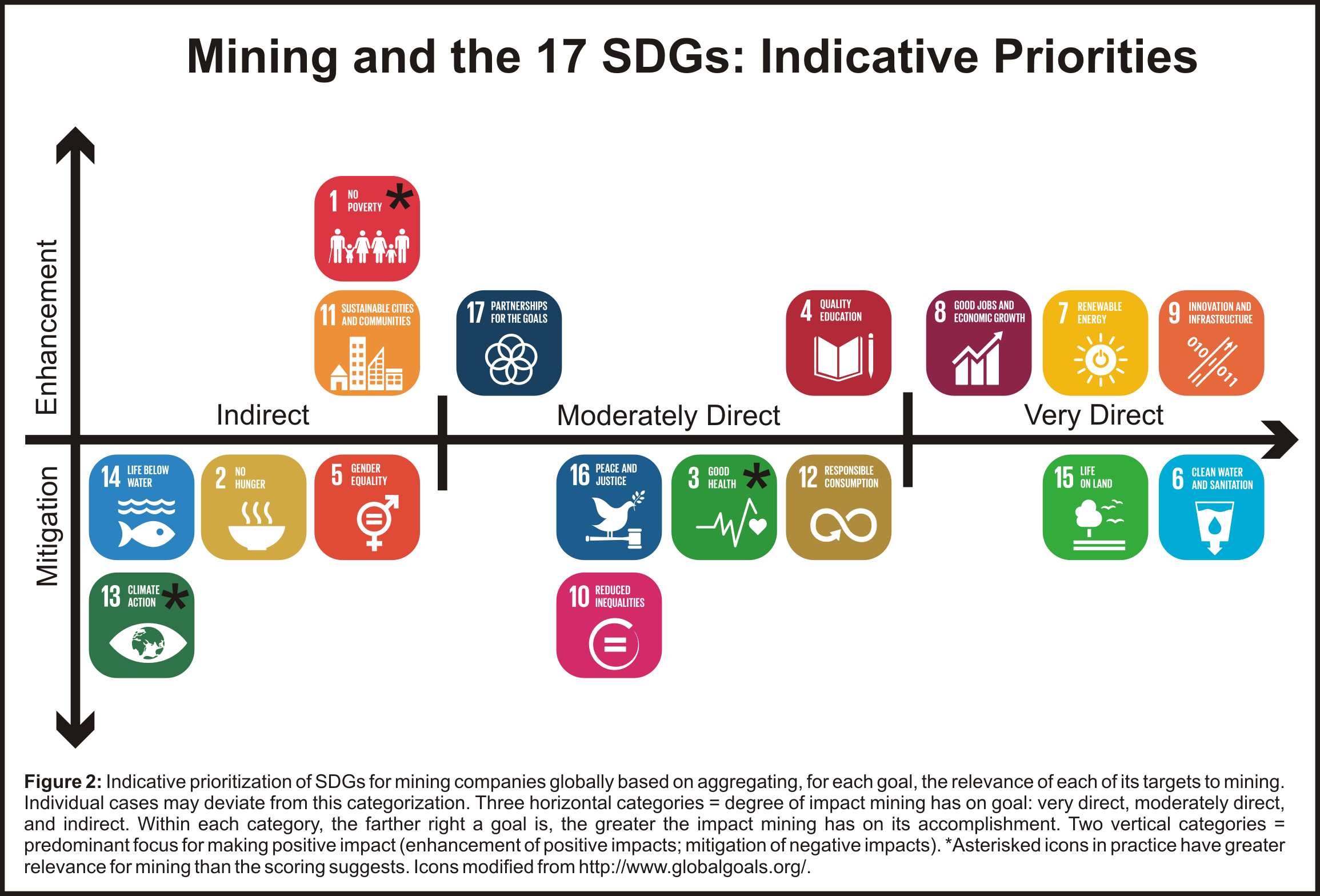How can mining contribute to the Sustainable Development Goals?
Stay up to date:
Modern Mining
This month, the heads of 193 UN member states will sign on to a set of 17 Sustainable Development Goals (SDGs), which will be the shared global development framework for the coming generation. Mining companies have the potential to become leading partners in achieving the SDGs. Through their direct operations, mining companies can generate profits, employment, and economic growth in low-income countries. And through partnerships with government and civil society, they can ensure that benefits of mining extend beyond the life of the mine itself, so that the mining industry has a positive impact on the natural environment, climate change, and social capital.
At the same time, mining companies will be called on to extract with responsibility, produce with less waste, use safer processes, incorporate new sustainable technologies, promote the improved wellbeing of local communities, curb emissions, and improve environmental stewardship. Mining companies committed to the SDGs will benefit from improved relationships with governments and communities and better access to financial resources; those that fail to engage meaningfully with the SDGs will put their operations at risk in the short and long term.
Over the last few months, the World Economic Forum, United Nations Development Programme (UNDP), UN Sustainable Development Solutions Network (SDSN), and the Columbia Center on Sustainable Investment (CCSI) have been working together to create a shared understanding of how the mining industry can most effectively contribute to the SDGs.
The forthcoming report – Mapping Mining to the Sustainable Development Goals: An Atlas – helps mining companies navigate where their activities – from exploration, through operations and mine closure – can help the world achieve the SDGs. Governments, civil society and other stakeholders can also identify opportunities for shared action and partnership with the industry.
Based on interviews with over 60 global experts from industry, civil society, governments, academia, and financial institutions, the report identifies where mining can enhance the positive impacts it has and mitigate the negative impacts across the 17 SDGs (see figure1 below).
For example, in addition to focusing on energy efficiency, mining companies can leverage their energy demand to extend power to undersupplied areas through partnerships that enable shared use energy infrastructure, helping to achieve SDG7 (Energy Access and Sustainability). At Semafo’s Mana mine in Burkina Faso, Windiga Energy is building a 20MW solar plant, the largest in sub-Saharan Africa; the Mana mine will purchase energy from the plant, and the rest will feed the national grid. Similar opportunities exist for the mining sector to contribute to the other SDGs, including catalyzing economic growth and employment (SDG 8), creating more resilient infrastructure (SDG 9), combating climate change and its impacts (SDG 13) and others.
The Atlas is only a first step toward building a dialogue around mining’s contributions to the post-2015 development agenda, and what types of partnerships will facilitate positive outcomes. Success of the SDGs will require unprecedented co-operation and collaboration among governments, non-governmental organizations, development partners, the private sector and communities. The mining sector is well positioned to be a key contributor to this success.
The role of the mining industry in implementing the SDGs will be discussed at the UN Sustainable Development Summit in New York on 27 September by a panel of experts including Helen Clark (Administrator, UNDP), the Hon. Christopher Yaluma (Minister of Mines, Energy and Water Development, Zambia), H.E. Didier Reynders (Deputy Prime Minister and Minister of Foreign Affairs, Belgium), H.E. Manuel Pulgar-Vidal (Minister of State for Environment, Peru), Mark Cutifani (CEO, Anglo American), and Jeffrey Sachs (Director, the Earth Institute, Columbia University).
To receive an electronic copy of the report when it is published, please email ccsi@law.columbia.edu.
Authors: Gillian Davidson, Head of Mining and Metals Industries, World Economic Forum; Lisa Sachs, Director, Columbia Center on Sustainable Investment, Columbia University, USA; and Casper Sonesson, Deputy Director, Private Sector at United Nations Development Programme
Image: A worker walks past a bucket-wheel reclaimer at the Fortescue loading dock located at Port Hedland in the Pilbara region of Western Australia December 3, 2013.REUTERS/David Gray
Don't miss any update on this topic
Create a free account and access your personalized content collection with our latest publications and analyses.
License and Republishing
World Economic Forum articles may be republished in accordance with the Creative Commons Attribution-NonCommercial-NoDerivatives 4.0 International Public License, and in accordance with our Terms of Use.
The views expressed in this article are those of the author alone and not the World Economic Forum.
Forum Stories newsletter
Bringing you weekly curated insights and analysis on the global issues that matter.
More on Sustainable DevelopmentSee all
Naoko Tochibayashi and Mizuho Ota
June 27, 2025
Muhammad Hassan Dajana and James Balzer
June 27, 2025
Ajit Singh and Nicole Cowell
June 24, 2025
Andrea Willige
June 24, 2025
Stig Martin Fiskaa
June 23, 2025
Sandeep Chandna
June 20, 2025






